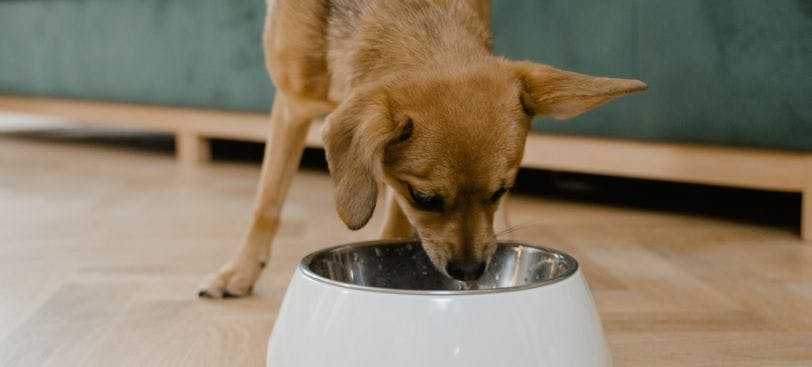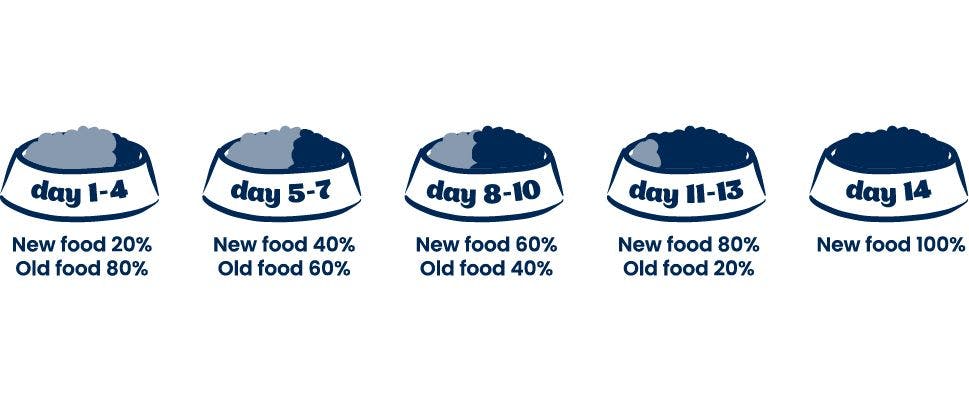
Sometimes changing your pet’s diet is necessary, but it’s important to transition your pet to new food slowly so their stomach isn’t overwhelmed. In this guide we'll cover the best way to transition your pet to a new food and avoid upset stomachs.
Reason to Change Your Pet’s Diet
Changing your pet’s diet isn’t a cause for alarm – but there are important steps to follow to ensure the transition goes smoothly and your dog or cat doesn’t suffer any discomfort or stomach issues. You may want to change your pet’s diet for any of the following reasons:
- Your pet has a medical condition which can be aided with prescription diet – as recommended by your vet.
- You’d like to switch to a super-premium food for better nutrition.
- Your circumstances have changed, and you need to move your pet onto more budget-conscious food.
- Your pet has moved into a new life category and thus there are other food types better suited to them (for instance your puppy or kitten may no longer be in that age bracket, or your pet could move into the mature-age bracket and require food with less calory density).
- Your pet is pregnant or nursing.
- Your pet is overweight and you’re transitioning them to diet food, or your pet has reached goal weight and you want to transition them back to normal food.
A Guide for Transitioning Pet Food
While we’re used to our own stomachs (which can handle a variety of foods at any given time), dogs and cats require a balanced and regular diet – otherwise they’re prone to stomach upsets.
Regardless of the reason for changing a pet’s diet, it is imperative that the transition is gradual. Slowly introducing increased amounts of the new food whilst decreasing the volume of the previous diet will significantly reduce the risk of gastro-intestinal upsets and disruption of a balanced gut biome.
If you suddenly change your dog or cat to a new diet without a transitioning process, you risk upsetting their stomachs. Vomiting, diarrhoea and runny poos are common symptoms of a pet that’s had their diet changed too soon – and in severe cases, pets can become very unwell and require medical intervention, or it could be fatal.
This isn’t to say you shouldn’t change your pet’s food! It’s just very important to do it slowly to ensure your pet has adapted to the new food and prevent any discomfort or severe side effects.
Expert Petstock vet Dr Nick Emerton recommends transitioning your pet to their new food gradually – ideally over a period of 14 days. This is just a rough guide however, as some pets will need more time – especially cats who can take up to a month to adjust to a new diet. It’s recommended to consult your vet prior to your change, who will be able to give you more tailored advice to your individual animal.
The transition to new food should take place over a period of 14 days.- Days 1-4: Serve 80% of the old food and 20% of the new food.
- Days 5-7: Gradually increase the new food portion to 40% and reduce the old food to 60%.
- Days 8-10: Now, make the serving 60% new food and 40% old food.
- Day 11-13: Increase new food to 80% share and decrease old food to a 20% share.
- Day 14: If your pet has shown no signs of discomfort, you can now fully transition to the new food.
Transitioning your pet’s food works by feeding them a mixed portion of food – partially their old diet, and partially their new food. As you transition along, you will feed them more of the new diet and less of the old – until you’ve fed them an entire serve of their new food. By transitioning your pet’s food this way, you ease the strain on their sensitive stomachs and reduce the risk of your pet exhibiting adverse symptoms.
